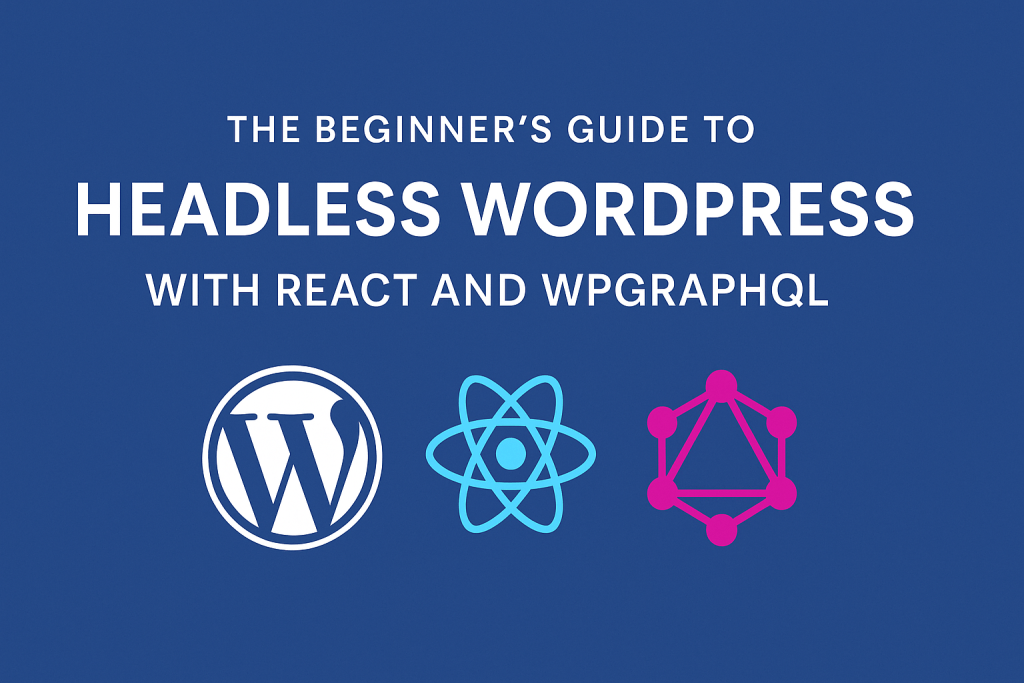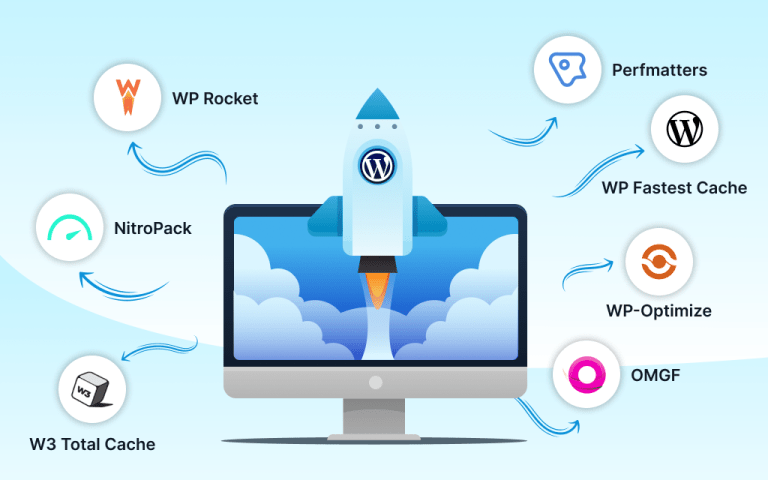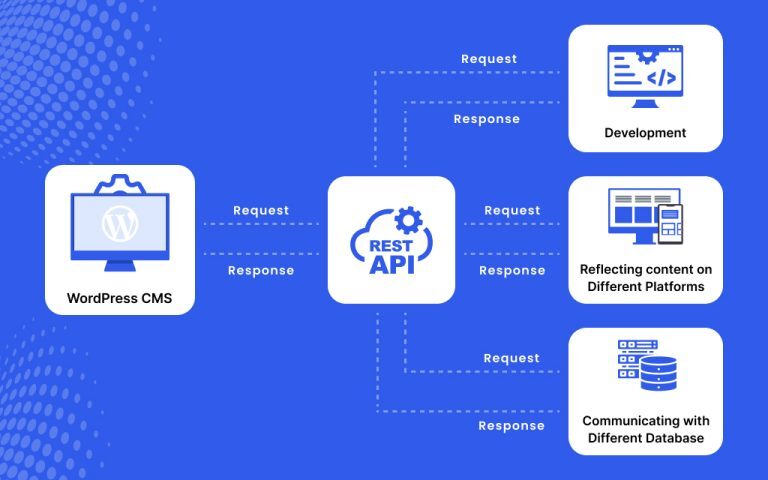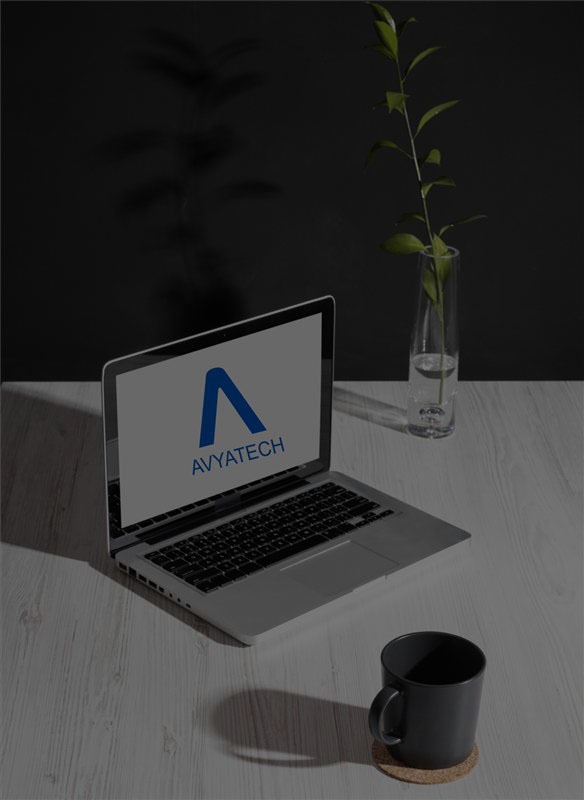Headless WordPress with front-end JavaScript library React and WP plugin WPGraphQL lets you use WordPress purely for content management. While React controls the site’s appearance. On the other hand, WPGraphQL delivers fast, secure, and customizable data connections for the modern web. Feature-rich WordPress smartly makes websites modern, flexible, and fast. With a headless setup, developers can also pair WordPress with the frontend.
You can future-proof your website with headless WordPress. This beginner-friendly guide to headless CMS helps you understand how to use WPGraphQL for fast WordPress sites. It also discusses headless WordPress, its growing popularity, set up, and the use of plugins for better output with real-world examples.
Headless WordPress: Meaning
WordPress is like a brain that controls both the backend and the frontend. Backend is where you manage content, and frontend is what visitors see. With a headless setup, you keep WordPress but replace the frontend with a powerful JavaScript library: React.
With headless setup, React lets you build your own frontend and control website design and display. WordPress still holds all content and lets you use it for content storage and management. Headless WordPress gives all the benefits of modern websites without giving up the ease of WordPress. Headless solves website development issues with a future-ready website that is easy to manage behind the scenes.
Imagine WordPress as a content warehouse. Interestingly, the React library acts as a delivery van.
Key Benefits of Using Headless
Headless WordPress lets you manage your site’s content with WordPress while building a fast, modern, and customizable frontend using React, with WPGraphQL efficiently serving content via modern APIs for speed, security, and flexibility. It is a perfect future-ready approach for developers and beginners alike.
React can load pages much faster than traditional WordPress themes. Since WordPress is decoupled, attackers can’t access it easily. React allows developers complete control over the site’s look and user experience. Developers get full flexibility over design using modern tools. You can send WordPress content to different resources, including mobile apps, websites, and smart TVs. It has inbuilt features you can use without adhering to WP theme structure.
Performance Benefits
- Faster Delivery
- Efficient Data Fetching
- Smaller Payloads
- Higher Core Web Vitals
Security Benefits
- Backend Isolation
- Reduced Attack Surface
- API Authentication Options
Scalability Benefits
- Separate Scaling Concerns
- Horizontal Expansion
Developer Workflow Benefits
- Freedom from PHP Themes
- Advanced Dev Tools
- Separate CI/CD
Omnichannel Readiness (Content Delivery)
- Write Once, Deliver Everywhere
- Easy API Consumption
| Benefit | Traditional WordPress | Headless WordPress |
| Speed | Often slower | Very fast with React |
| Custom UI | Limited by themes | Fully customizable |
| Multi-platform use | Difficult | Easy |
| Developer experience | Old-school | Modern toolchain |
Key Tools: WPGraphQL and React
Now let’s meet the tools that make this setup work:
WPGraphQL
It is a free WP plugin offering a GraphQL API to pull data, including posts, media, and pages, from WP. It transforms WordPress into a GraphQL server. In addition, it plays a vital role in efficient data retrieval for mobile apps or headless CMS setups. It’s like saying, “Hey WordPress, give me all blog posts with images and titles.” And it does.
React
A popular front-end JavaScript library made by Facebook. It is used to build fast, dynamic user interfaces. Think of React as your designer and display manager. Headless WordPress with React combines a modern frontend framework and robust content management system (CMS). It ensures flexibility, performance, and development workflow.
Together, React and WPGraphQL tools let you:
- Fetch content from WordPress using WPGraphQL.
- Show that content using React components.
Step-by-Step Headless WordPress Setup
You can implement a headless WordPress website, in practicality, using React and WPGraphQL. It has three vital steps.
1. Set Up the WordPress Backend by
- Installing & Configuring WPGraphQL
- Verifying and Exploring the GraphQL Endpoint
- Setting WPGraphQL
2. Create the React Frontend by
- Bootstrapping with Create React App or Next.js
- Installing Apollo Client
- Configuring ApolloProvider
- Querying WordPress Data in React
3. Manage Frontend Routing and Navigation
4. Build and Deploy the Solution
How Data Flows in Headless WordPress?
| Content Creation → Data Exposure → Front-End Query → Response → UI Rendering → Omnichannel Support |
Here’s how the setup flows:
- You write a blog post in WordPress.
- WPGraphQL makes it available through a URL (called an endpoint).
- React pulls that content using GraphQL queries.
- React displays that post on your website.
The process is fast and clean. React only gets what it actually requires. So, your website runs smoothly even with a heavy amount of content.
A Quick Code Example: Fetching Posts
Here’s how a developer might ask WordPress for all blog post titles:
query GetPosts { posts { nodes { id title } } } |
And here’s how React might show those titles:
function Blog() {
const { loading, error, data } = useQuery(GET_POSTS);
if (loading) return <p>Loading...</p>;
if (error) return <p>Error :(</p>;
return (
<div>
{data.posts.nodes.map(post => (
<h2 key={post.id}>{post.title}</h2>
))}
</div>
);
}Why Does Headless WordPress Matter?
Web users expect speed. Search engines prefer fast-loading pages. A slow website is likely to lose incoming traffic. A React WordPress site can help solve that.
You always need new app launches when your business grows. You also need to add interactive features to the website and connect it to other tools. A headless CMS setup like this makes that easy.
You are no longer stuck inside the old WordPress theme system. You can build anything, connect to anything, and show content anywhere. Your WordPress content becomes truly flexible.
Going headless future-proofs your site. Your WordPress content stays untouched while developers use modern tools like React and GraphQL to build fast, flexible frontends. It’s clean, fast, and built for what’s next.
FAQs on Headless WordPress
1. What does “headless WordPress” even mean?
Answer: It just means you use WordPress to write and manage your content, but not to design how your site looks. Instead, something like React handles the design part. So, WordPress is the brain, and React is the face. They work together but separately.
2. Why would I use React with WordPress?
Answer: Because it makes your website faster and way more flexible. React lets developers build smooth, modern designs without the limits of regular WordPress themes. Your site loads quicker and looks better on phones, tablets.
3. I don’t know coding. Can I still use this setup?
Answer: Yes, totally! You still write blogs, add pages, and upload images from the usual WordPress dashboard. A developer just builds the React part for you in the beginning. After that, it works like normal, You won’t feel the tech behind it.
4. What’s WPGraphQL, and do I need to learn it?
Answer: WPGraphQL is like a smart messenger. It helps WordPress send your content to React in a neat and fast way. You don’t need to learn it; your developer will handle it. Just know that it makes everything run better behind the scenes.
5. Will my site still show up on Google?
Answer: Yes! If your site is built the right way (and your developer knows a bit about SEO), it can rank really well. In fact, because headless sites are so fast, they often get bonus points from Google.
Conclusion
At a broader level, headless WordPress sounds like a developer catchword. Clearly, it builds a faster and better website. You can also expect this sort of site to be highly functional and future-ready. It enables bloggers, startups, and agencies to gain better control over their websites.




















































































